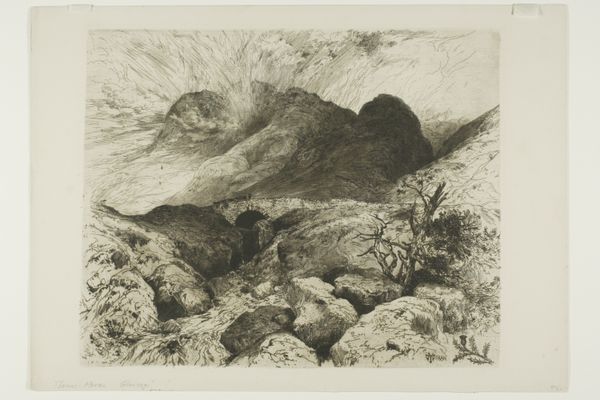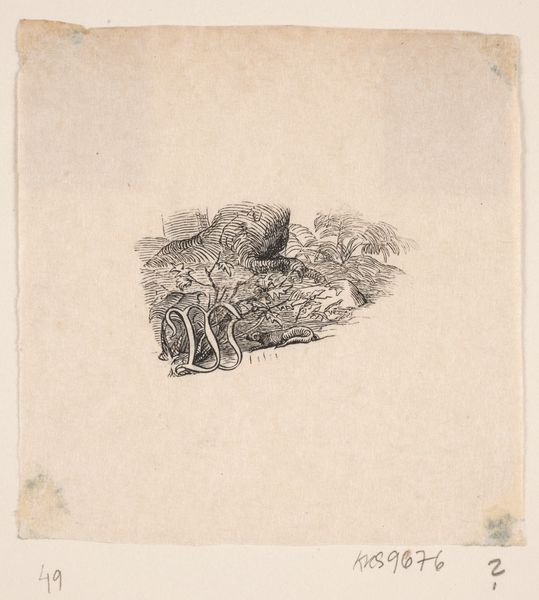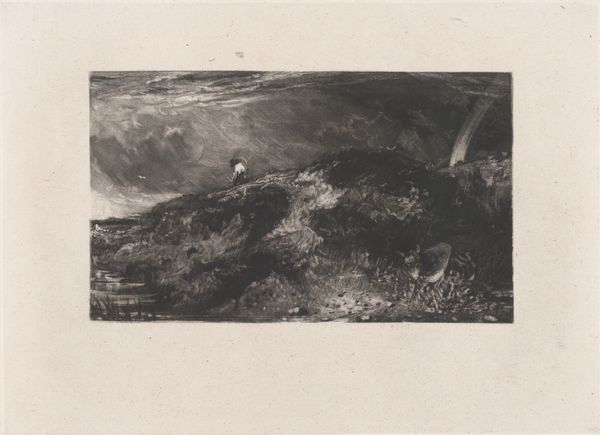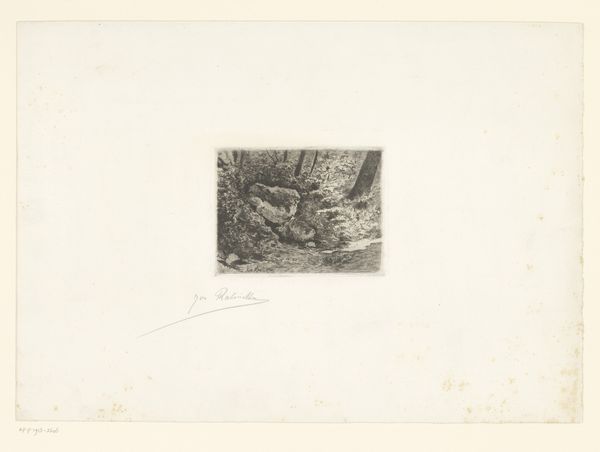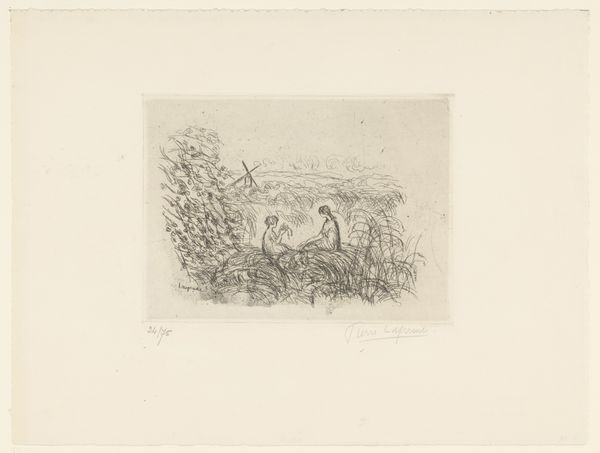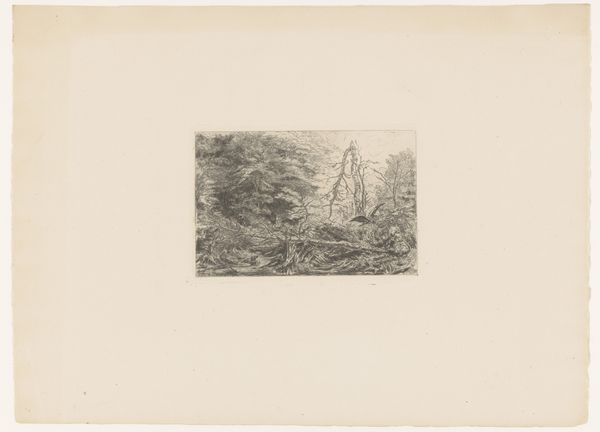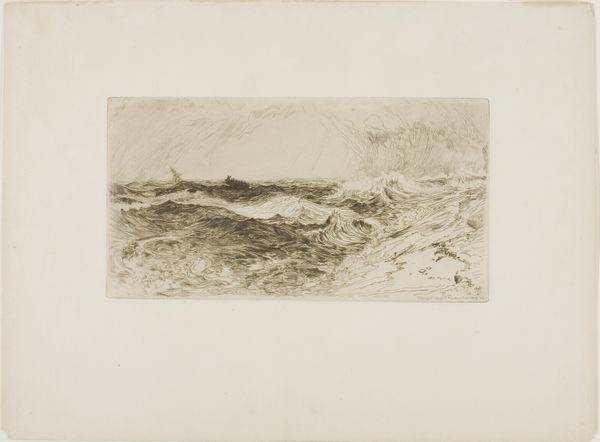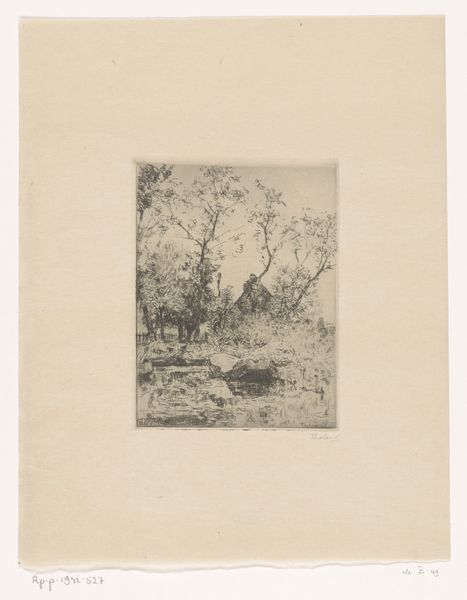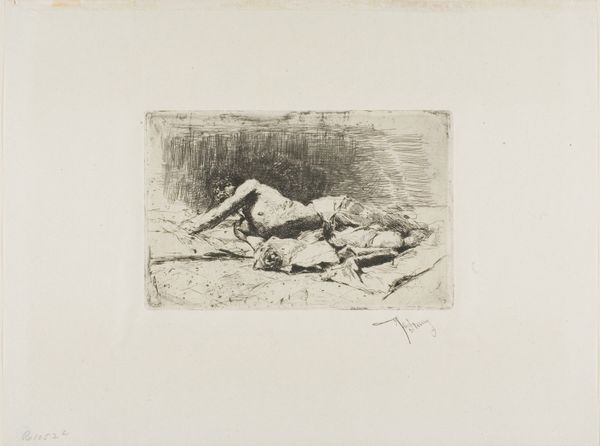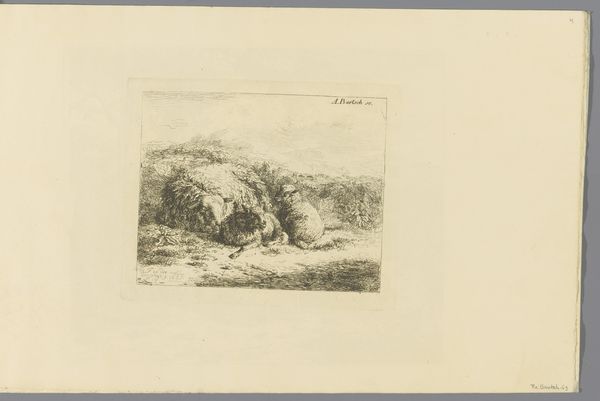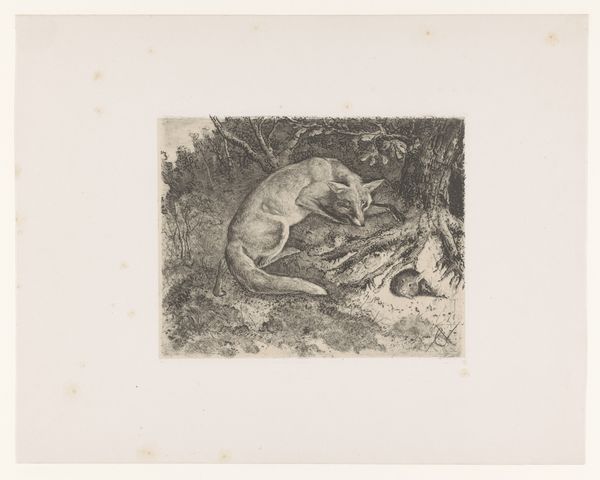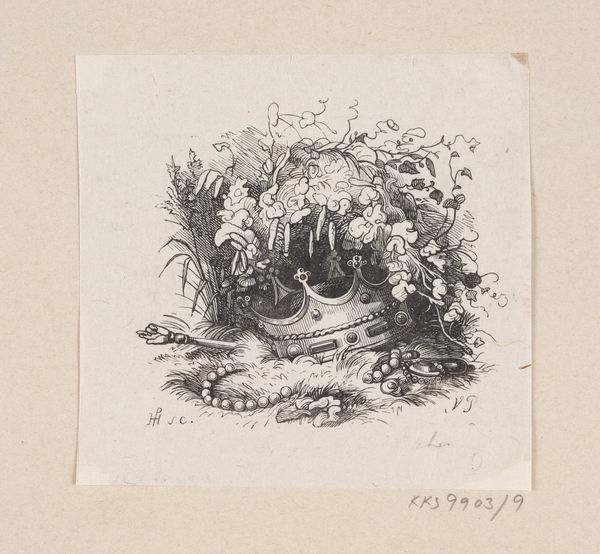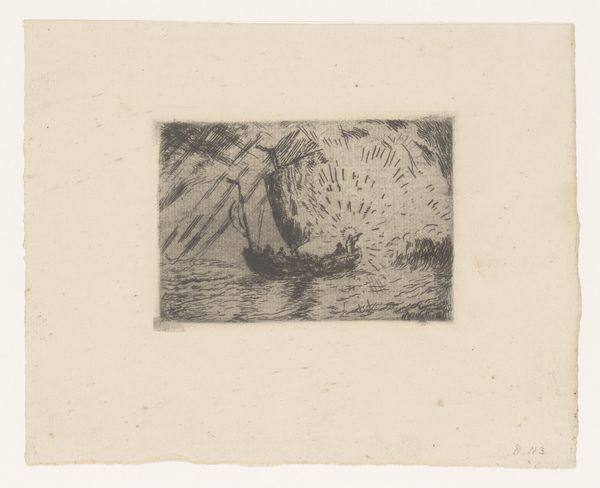
drawing, pencil
#
pencil drawn
#
drawing
#
pencil sketch
#
landscape
#
charcoal drawing
#
figuration
#
pencil drawing
#
romanticism
#
pencil
Dimensions: height 290 mm, width 370 mm
Copyright: Rijks Museum: Open Domain
Curator: Here we have a drawing by Paul Huet, created in 1834, titled "Titelprent met lezende man met hond in een bos," or "Title page with a reading man and dog in a forest". It's rendered in pencil. Editor: The overall impression is one of quiet intimacy. A secluded moment amidst dense foliage, almost a little vignette hidden from the world. Curator: Huet was, of course, a significant figure in the Romantic movement, and we can certainly see echoes of that here. The solitary figure, seemingly lost in thought and immersed in nature, speaks to that Romantic ideal of finding solace and understanding outside the confines of society. Considering his connections to other artists, it speaks to broader issues of that generation's rejection of the previous eras constraints. Editor: The materials themselves are crucial here. The softness of the pencil work allows for incredibly detailed textures – look at the layers of leaves, the varied grasses. It all feels very immediate, very directly connected to the act of observing and recording the natural world. It also emphasizes accessibility, pencil and paper are readily available, making art possible without expensive mediums. Curator: It is worth discussing this particular representation of masculinity within the artistic landscape of the 19th century. This wasn't about overt power, but rather internal reflection, sensitivity, and intellectual curiosity which challenge the prevailing, more dominant ideas about men during this time. Editor: Precisely. And I'm drawn to the potential symbolic implications of the dog. Loyalty, companionship, perhaps even a reflection of the man's own inner state? Is this domestic labor depicted with the work involved in living with animal companions being illustrated, or something deeper regarding society in general. Curator: Indeed, considering Romanticism’s obsession with the individual in dialogue with the world around them. I find myself also contemplating themes like alienation and identity here. Perhaps even the idea of seeking sanctuary from political realities? Editor: Absolutely, this work’s existence challenges the ideas around high art. What this means for how labor and art were understood can't be disregarded Curator: The work operates on multiple levels then: a beautifully rendered study of nature, and also a powerful reflection on human emotion and intellectual pursuit. Editor: Yes, a testament to how even the simplest materials can create a profound sense of place and evoke deep contemplation about ourselves.
Comments
No comments
Be the first to comment and join the conversation on the ultimate creative platform.
